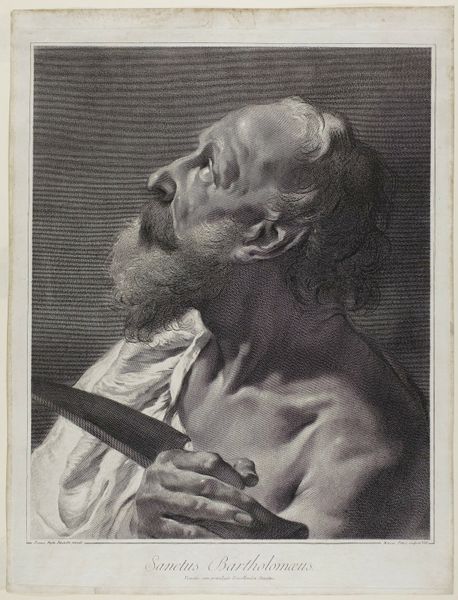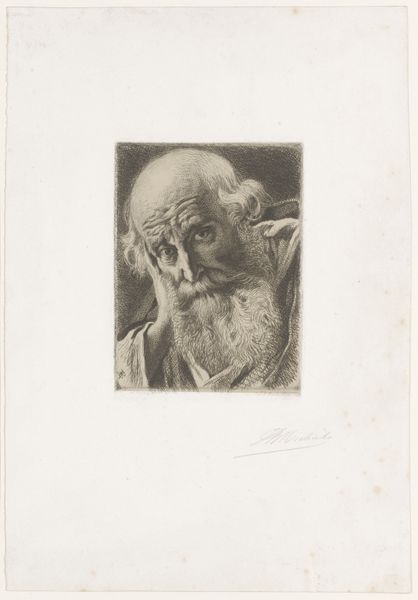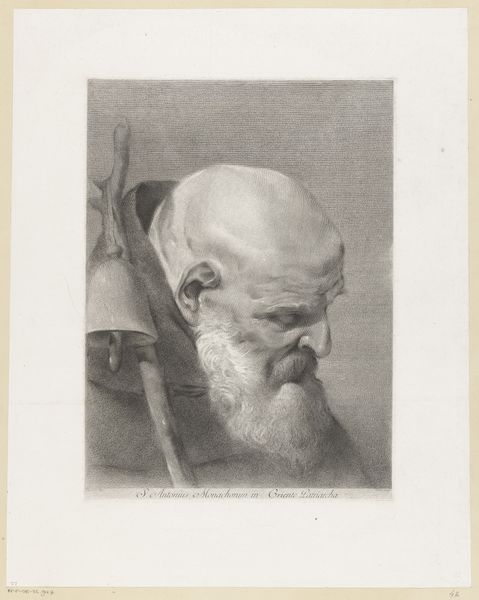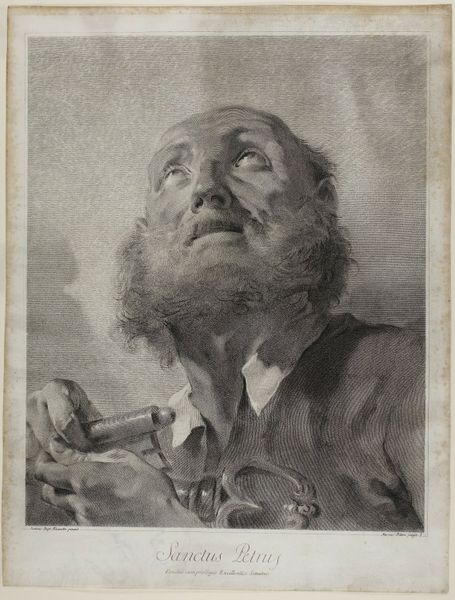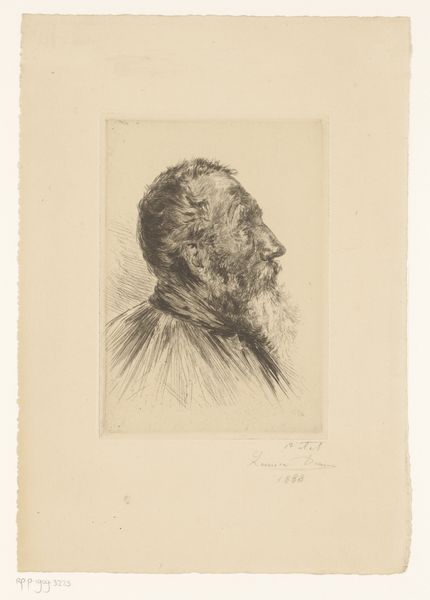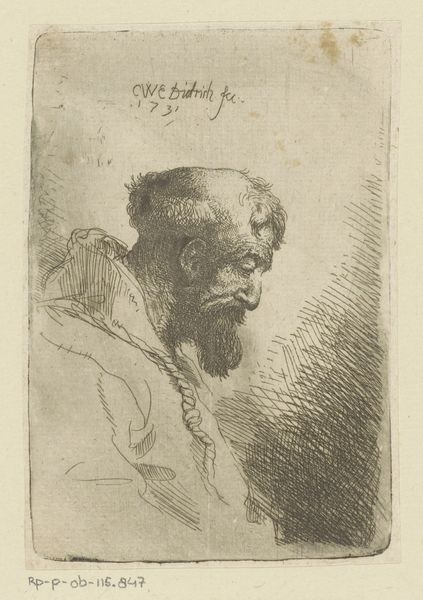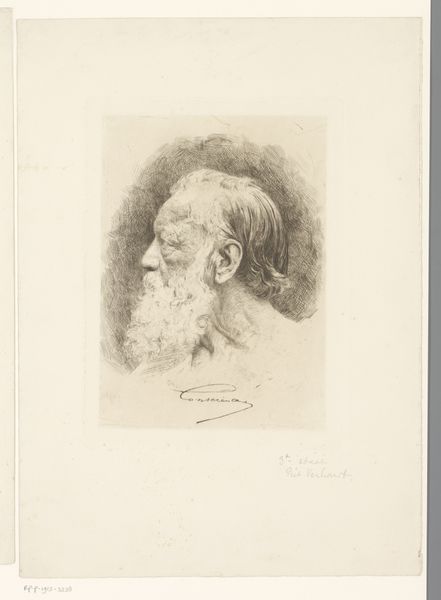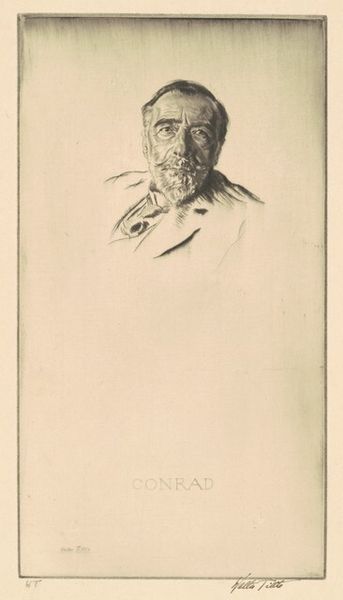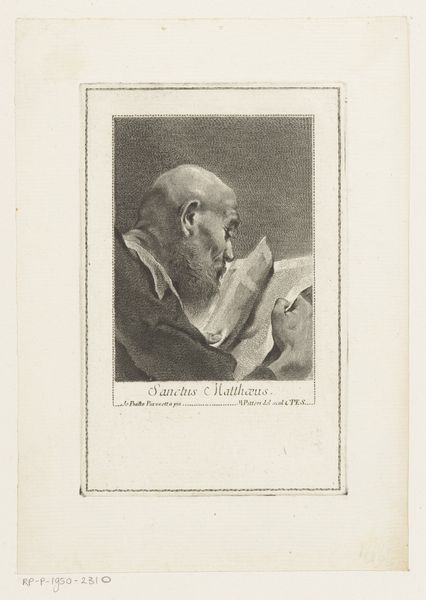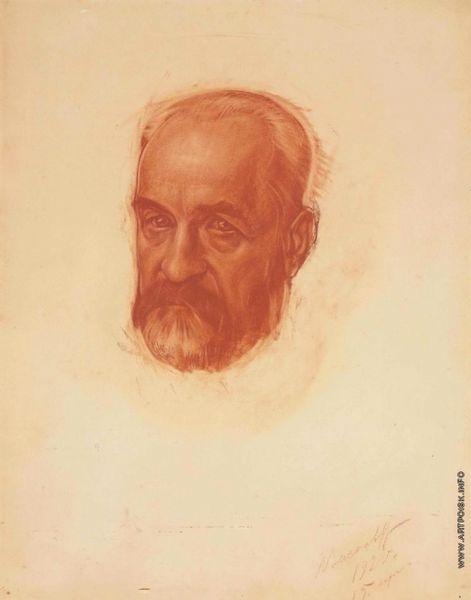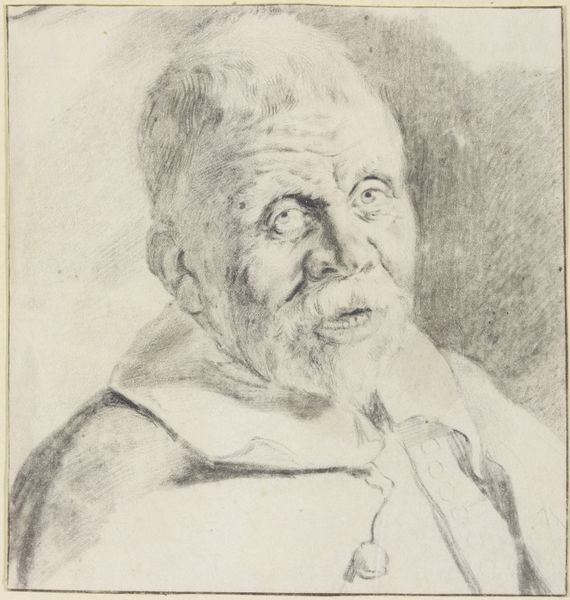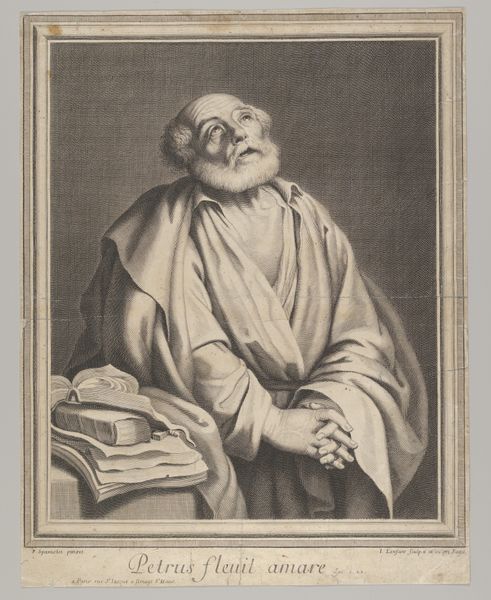
God the Father and Eleven of the Twelve Apostles n.d.
0:00
0:00
drawing, print, paper, engraving
#
portrait
#
drawing
# print
#
paper
#
history-painting
#
engraving
#
realism
Copyright: Public Domain
Curator: We're looking at "God the Father and Eleven of the Twelve Apostles." This is an engraving on paper by Giovanni Marco Pitteri. Editor: It strikes me as incredibly intimate. Despite the grandeur of the implied subject matter, there's something very personal and quiet about this portrayal. He's caught in a moment of deep contemplation or study. Curator: Pitteri was known for his skill as a reproductive engraver, meaning he primarily made prints after paintings by other artists. Understanding that is crucial, because we see how printmaking served as a powerful tool for disseminating imagery and ideas throughout Europe at the time. Editor: Absolutely. It's easy to overlook the role of prints like these in shaping religious and political understanding. What's fascinating is the realism he brings to it; it feels like a real person rendered with incredible detail – you can almost feel the texture of the paper he holds, the weight of the story in his hands. Curator: The use of light and shadow, the textures Pitteri achieves through engraving are remarkable. Notice the crosshatching used to define the forms, to create volume. It gives the image a sense of depth and presence despite being a monochrome print on paper. This specific print, by the way, resides here at the Art Institute of Chicago. Editor: I'm drawn to the implied narrative here. What is he reading? What impact will these words have? It raises questions about the role of interpretation and authority. The focus on individual understanding seems significant. Curator: And the print itself, as an object, participates in a network of circulation and interpretation, as the means to communicate with broader society through visual representations of religious icons, concepts and beliefs. Editor: It makes you consider how visual culture influences our perceptions of religion and power. Considering this image through the lens of contemporary social justice issues opens interesting questions about representation, knowledge production, and whose voices are amplified or silenced. Curator: Indeed, a seemingly straightforward religious image invites multiple layers of interpretation when considering its historical and social contexts. Editor: I'll leave with that new consideration for the narratives and their impact throughout time.
Comments
No comments
Be the first to comment and join the conversation on the ultimate creative platform.
